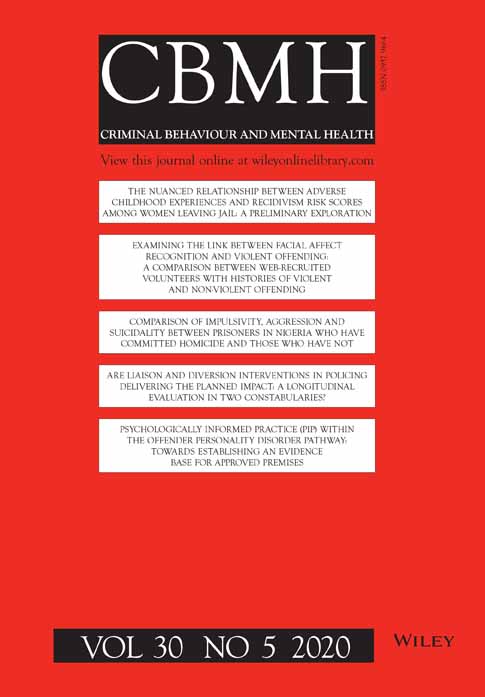Examining the link between facial affect recognition and violent offending: A comparison between web-recruited volunteers with histories of violent and non-violent offending
Abstract
Background
The link between facial affect recognition and criminal justice involvement has been extensively researched, yet there are virtually no data on the capacity for facial affect recognition in post-incar+cerated individuals, and the results of many studies are limited due to a narrow focus on psychopathy rather than offence category.
Aims
To test the first hypothesis that individuals reporting a history of a violent offence would show a deficit in facial affect recognition and the second hypothesis that the violent offender's deficit would be exclusive to recognition of negative expressions, not affecting positive or neutral expressions.
Method
Post-incarcerated individuals (N = 298) were recruited online through Qualtrics and completed questionnaires assessing their criminal justice background and demographics. They completed measures of facial affect recognition, anxiety and depression, and components of aggression.
Results
A logistic regression, including sex, ethnicity, age and years of education and depression/anxiety scores, indicated that committing a violent offence was independently associated with lower facial affect recognition scores as well as male gender and a trait-based propensity towards physical aggression, but no other co-variable. These data provided no evidence that this deficit was specific to negative emotions.
Conclusions and implications for future research/practice
Our study is one of the first to examine facial affect recognition in a post-incarcerated sample. It suggests that deficits in facial affect recognition, already well documented among violent prisoners, persist. While acknowledging that these may be relatively fixed characteristics, this study also suggests that, for these people, nothing happening during their imprisonment was touching this. Improving capacity in facial affect recognition should be considered as a target of intervention for violent offenders, developing or revising in-prison programmes as required.
CONFLICT OF INTEREST
The authors declare no conflicts of interest.
Open Research
DATA AVAILABILITY STATEMENT
Data sharing is not applicable to this article as no new data were created or analysed in this study.




